
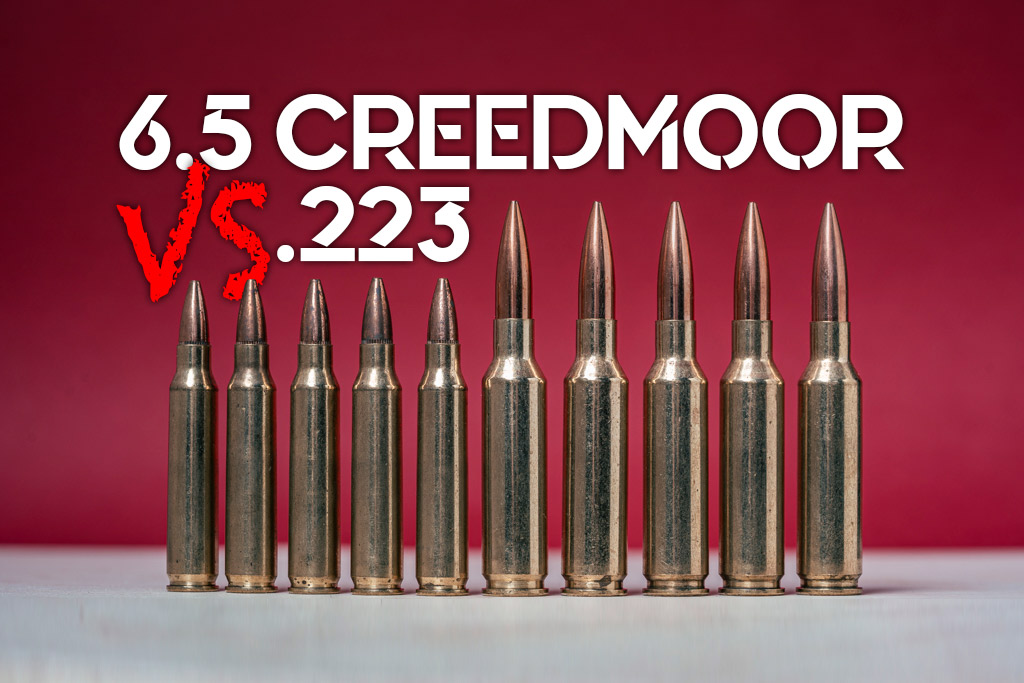
The 6.5 Creedmoor VS 223 are both popular rounds. The .223 Rem has been a household name for over fifty years, while the 6.5 Creedmoor is a rising star. But how do these rounds overlap, and how do they differ? If you could only choose one, which would it be?
The 6.5 Creedmoor and the .223 are like Floyd Mayweather and Mike Tyson – both skilled at their craft but not in the same weight class. However, even though these rounds aren’t in direct competition with each other, they do have some overlap in their uses. And indeed, there are benefits and drawbacks to both the .223 and the 6.5 Creedmoor.
Let’s discuss the differences between these venerable rounds, what tasks each excels at, and why you might choose one over the other.
History of the 6.5 Creedmoor and the .223 Remington
The 6.5 Creedmoor came about around 2007. What was the 6.5 Creedmoor all about? One of the lead designers, Dave Emary, stated their goal was to create a long-range competition round. And indeed, most agree that the 6.5 Creedmoor achieved that goal.
Where does the name “Creedmoor” come from? That was a nod to Creedmoor Sports and the original Creedmoor shooting matches. While competition shooting was the original road for the 6.5 Creedmoor, the long-distance accuracy and stable bullet quickly became popular as a hunting round, primarily for medium-large game.
We mentioned that the 6.5 Creedmoor is a new round, but that’s not by any means to say that it’s the first “6.5” round. The 6.5 Creedmoor is a new iteration of the “6.5 Swede,” which was first created and used in 1891. Historically, the 6.5 rounds of any kind have been more popular in Europe, but that’s starting to change.
.223 Remington Overview
The .223 is older than the 6.5 Creedmoor, developed in the early 1960s. The .223 is closely related to the 5.56 NATO (which the military adopted for the M16 rifle and has been widely used ever since). While the 6.5 Creedmoor was developed as a competition round and then drifted into the hunting space, the .223 was designed more as a combat round that proved popular on the civilian market.
Let’s break down some of the numbers on these rounds so you can form a more concrete picture of what they can and can’t do.
Cartridge Size Comparison: 6.5 Creedmoor VS 223
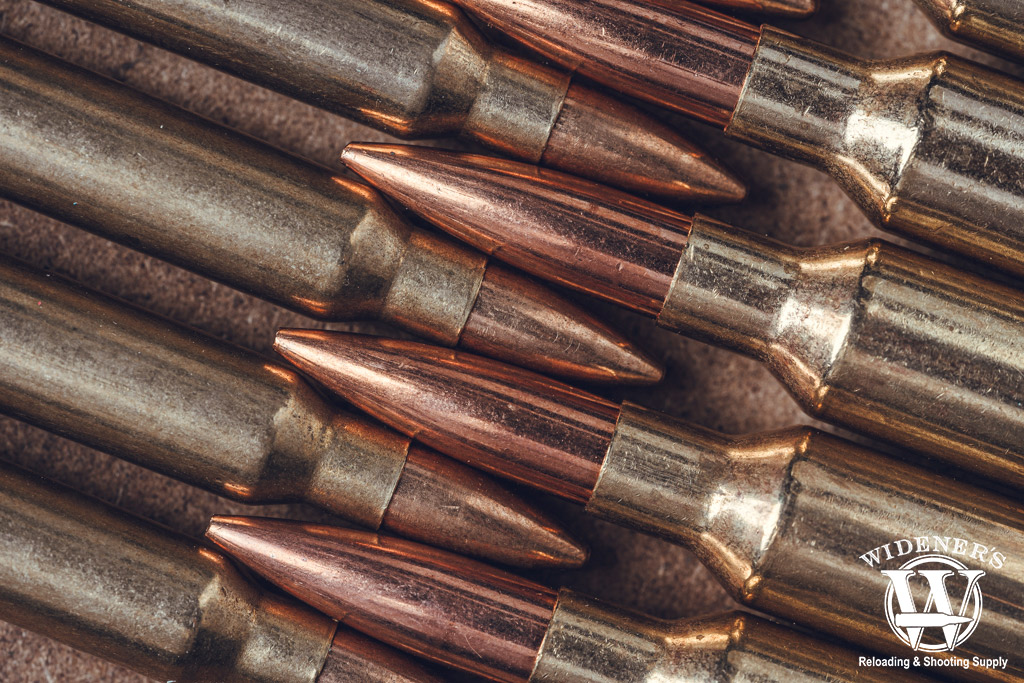
.223 Rem (Left) has less recoil, while the 6.5 Creedmoor (Right) has more power and energy.
In this section, we’ll take some time and look at the raw numbers on these two cartridges. As we’ve said, these rounds aren’t necessarily in the same class – this section will show you some numbers that explain why. Later we’ll discuss some ballistics for the 6.5 Creedmoor and the .223.
| Cartridge Specs | 6.5 Creedmoor | .223 Rem |
|---|---|---|
| Parent Casing | .30 Thompson Center | .222 Remington |
| Bullet Diameter | .264“ | .224″ |
| Neck Diameter | .295″ | .253″ |
| Base Diameter | .470″ | .376″ |
| Case Length | 1.92″ | 1.76″ |
| Overall Length | 2.825″ | 2.26″ |
| Grain Weight | 85gr-160gr | 36gr-77gr |
| Max Pressure (SAMMI) | 62,000 PSI | 55,000 PSI |
Dimensions for the 6.5 Creedmoor:
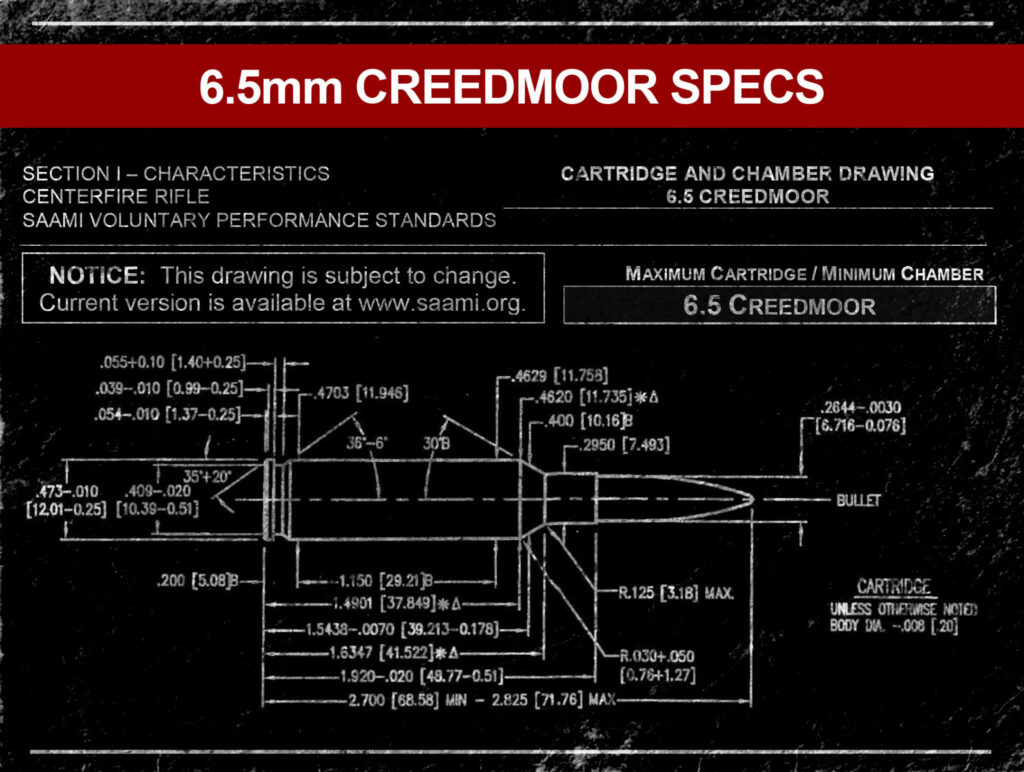
The 6.5 Creedmoor design is an example of excellent balance for size, weight, and propellant.
- Designed: 2007
- Designer: Hornady Manufacturing
- Type: Centerfire Rifle
- Case capacity: 52.5gr H2O
Dimensions for the .223 Remington (5.56):
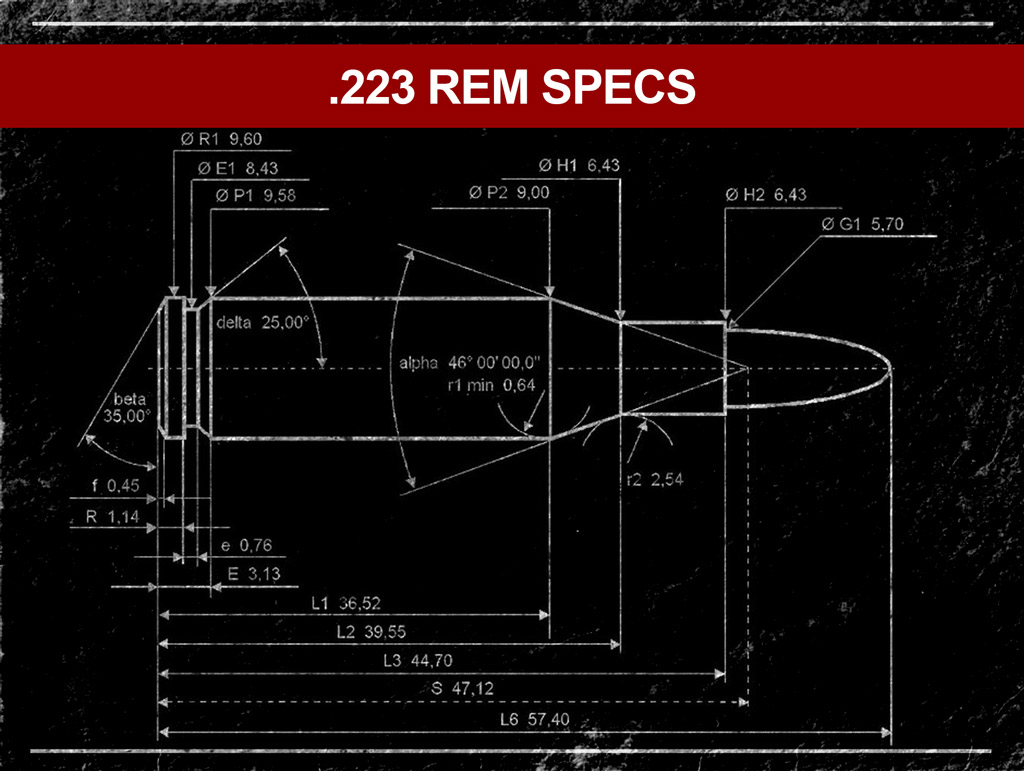
The .223 Rem is an industry-standard when it comes to centerfire rifle cartridges.
- Designed: 1962
- Designer: Remington Arms
- Type: Centerfire Rifle
- Case capacity: 28.8GR H2O
While the .223 and 5.56 NATO are interchangeable in some rifles, not all chambers are made to fire both, so check with your rifle’s manufacturer.
Now let’s trek into some more direct comparisons between these two rounds.
Differences Between the 6.5 Creedmoor and the .223
The fact is, the .223 and the 6.5 Creedmoor are quite different. The more direct comparison is often between the .308 and the 6.5 Creedmoor. We can still explain some similarities and differences between these cartridges. When you consider the different roles of each cartridge, try to keep in mind your personal needs and shooting abilities.
Here are some of the main differences between the 6.5 Creedmoor and the .223:
- Raw power: the 6.5 is more powerful than the .223. This is where the comparison between Mayweather and Tyson came from in the first section – both are capable rounds, but one has more bang. With the 6.5 Creedmoor, you can hunt larger animals and stay accurate to longer distances – we’ll go over the numbers in a later section.
- Distance: The 6.5 Creedmoor was bred and fed for distant accuracy. The bullet has an extremely high ballistic coefficient, flying flat and straight and carrying over 1200 foot-pounds of energy to 500 yards. The .223 carries only about 330 foot-pounds at 500 yards.
- Wind Drift: The 6.5 Creedmoor has an extraordinary resistance to wind drift. Again, this comes from the 6.5 Creedmoor’s genesis as a competition caliber. The 6.5 Creedmoor has a wind drift of about 5 inches at 300 yards, whereas the .223 has a wind drift of about 10 inches.
Now let’s chat about some of the similarities between both rounds.
Similarities Between the 6.5 Creedmoor and the .223 Remington
Let’s go over a few similarities. Note that we use the word similar loosely – nothing about these cartridges is truly the “same.” However, they are more alike than a B.B. gun and an AK-47, so we’ll do our best to spell out the parallels.
Similarities between the .223 and the 6.5 Creedmoor:
- Accuracy. Both the 6.5 Creedmoor and the .223 were designed to be tack-pushing machines. While the 6.5 Creedmoor has the edge at longer ranges, the .223 is spot-on at more average ranges.
- Recoil. Among medium to large cartridges, the 6.5 Creedmoor is known to have mild recoil, even softer than the .308. However, for the ultimate recoil-less rifle, the .223 wins the day, with many shooters barely noticing recoil (particularly when you’re used to firing larger calibers).
- Short action. These calibers are made for short action, so you get reduced weight, fast cycling, and the ability to carry slightly more ammunition.
We’ll now delve more specifically into the best uses for each ammo.
Best Uses For Both Cartridges
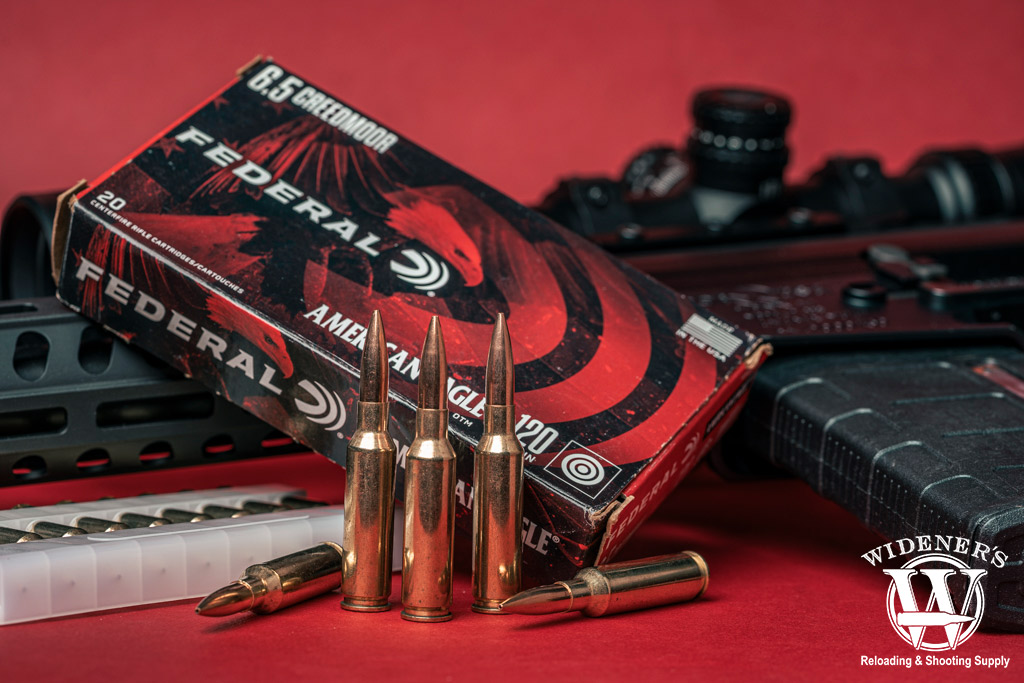
Don’t get lost in the weeds, choose the cartridge that serves you the best, that you’re the most comfortable shooting.
Your purpose is the heart of firearm selection. Many people get lost in the weeds of stats, ballistics, platform, and the rest. Don’t get me wrong – those things are important, but if they’re not being judged from the standpoint of purpose, it’s easy to go off the rails.
For example, some might say the 6.5 Creedmoor is the superior cartridge. But what about those in a survival-type environment, such as people in remote Alaskan regions? Wouldn’t they want lighter ammunition and easier access to rounds and parts for the .223 platform? Maybe. The point is: situations change, and purposes differ.
Best Uses for the .223 Remington
The .223 Remington is one of the most versatile rounds available. Yes, there are some limits when it comes to hunting, but even those boundaries are stretched from time to time. The .223 is the best-selling cartridge in the USA.
When to grab the .223:
- Hunting: The .223 is an excellent round for varmints and slightly larger predators, such as coyotes, bobcats, and foxes. At super long ranges, you might want something bigger, but other than that, the .223 is solid. While you can use a 6.5 Creedmoor for varmint, if you’re trying to save the fur, then the .223 can be the better option.
- Self-defense: An argument could be (and often is) made that the .223 is a top choice for self-defense. The low recoil of the cartridge allows you to stay on target, and specialty rounds are available that help reduce overpenetration within a home.
- Range time: Many people like .223 at the range because you can shoot it all day. The ammunition is relatively inexpensive, and it has good accuracy.
- Notes on the .223’s capability: What about deer? In some states, shooting deer with the .223 is illegal, but it’s undeniably effective with good shot placement. Also, there are many states where taking a deer with a .223 is legal.
What about the big game? Some people take moose in Alaska with the .223, but this is not a mainstream use, and we wouldn’t recommend it. As we all know, limits go out the window when survival is on the line, but that doesn’t apply to the everyday.
Best Uses for the 6.5 Creedmoor
The 6.5 Creedmoor gives you a stable bullet that delivers long-range accuracy. We’ll go over some instances where you’d want to choose the 6.5 Creedmoor over the .223.
When to grab the 6.5 Creedmoor:
- Hunting: The 6.5 Creedmoor is comparable to the 308 in that it can take medium to large game. Some argue that, with the laser-like accuracy, the 6.5 Creedmoor is just as suited to taking medium-large games as anything else. If you’re curious, this video discusses whether the Creedmoor is good for hunting.
- Competition shooting: The 6.5 Creedmoor was designed for the competition range, so if you plan on competition shooting, you should consider it a great option.
- Ultra-long range: The fantastic thing about the 6.5 Creedmoor is the power it maintains up to 500 yards. If you’re stalk-and-shoot hunting over long distances or want something with a lot of reach, then the 6.5 Creedmoor is a strong contender.
While this compares the 6.5 Creedmoor and the .223, we’ve been mentioning the .308 a lot. If you’re curious, read this comparison of the 6.5 Creedmoor and the 308.
Ballistic Comparison: 6.5 Creedmoor VS 223
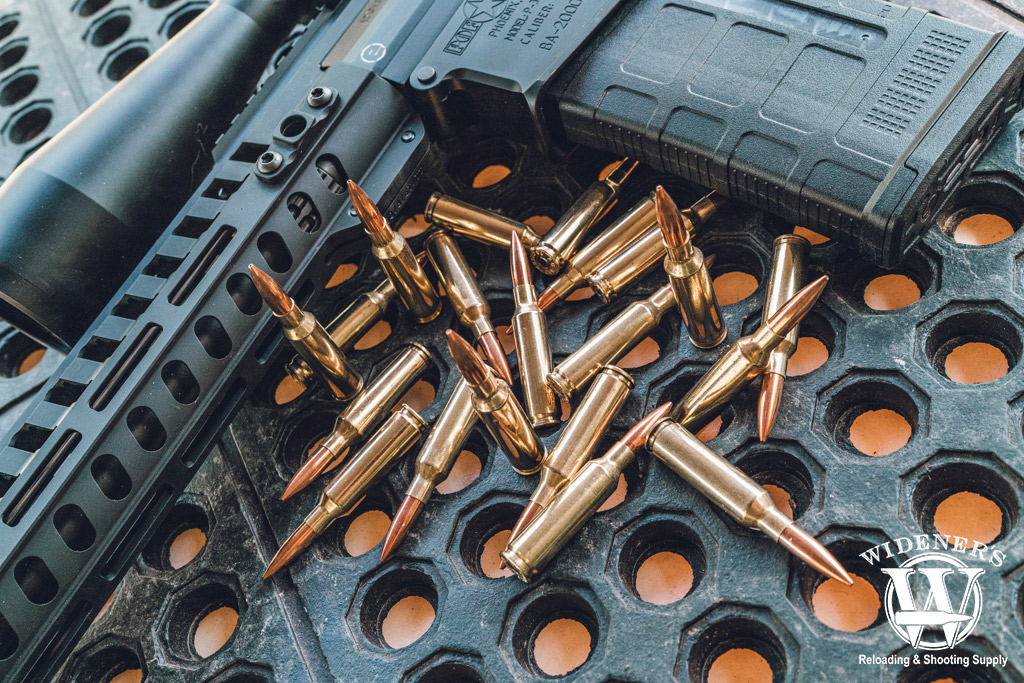
Both the 6.5 Creedmoor and the .223 Rem are capable of reaching velocities over 3,000 FPS.
Now we’ll compare the general ballistics of 6.5 Creedmoor VS 223. These numbers will change slightly based on the type of ammunition you’re using, the barrel, and the weather or wind conditions. However, having a baseline to understand each cartridge’s capability is helpful.
Standard Ballistics
The 120gr TMJ in 6.5 Creedmoor is a solid performer. It hits 2,900 in muzzle velocity leaving the barrel, with an impressive 2,241 FT LBS of energy. Bullet energy stays well over 1,000 FT LBS to 300 yards and beyond, giving it more stopping power than the .223 Rem bullet. Wind drift is good, about 1 inch at 100 yards and 7.5 inches at 300 yards. Bullet drop is 7.5 inches at 300 yards and it doesn’t fall off a cliff until it reaches minus 44 inches at 500 yards.
For a 55-grain American Eagle cartridge in .223, you’ll get a muzzle velocity of 3,240 FPS and 2,222 FPS at 300 yards. The energy will be about 1,000 ft-lbs at 100 yards and 603 ft-lbs at 300 yards, and 339 ft-lbs at 500 yards. Wind drift sits at about 1 inch at 100 yards and 10 inches at 300 yards. Bullet drop is negligible until 300 yards when it falls 6.8 inches below the point of aim.
| Caliber | Bullet Type | Bullet Weight | Velocity (Muzzle) | Energy (Muzzle) | 100 Yards (Velocity/Energy) | 200 Yards (Velocity/Energy) | 300 Yards (Velocity/Energy) |
|---|---|---|---|---|---|---|---|
| 6.5 Creedmoor | TMJ | 120gr | 2,900 FPS | 2,241 FT LBS | 2,672 FPS/1,902 FT LBS | 2,455 FPS/1,606 FT LBS | 2,248 FPS/1,347 FT LBS |
| .223 Rem | FMJ | 55gr | 3,240 FPS | 1,282 FT LBS | 2,874 FPS/1,008 FT LBS | 2,536 FPS/785 FT LBS | 2,222 FPS/603 FT LBS |
Gold Medal Ballistics
With a 140-grain Gold Medal Berger, the 6.5 Creedmoor will have a muzzle velocity of about 2,675 FPS, carrying 1,905 FPS out to 500 yards. You’ll also see about 2,100 ft-lbs of energy at 100 yards and 1,128 ft-lbs at 500 yards. The wind drift is only 0.6 inches at 100 yards and 6.2 inches at 300 yards. Bullet drop is 8.4 inches at 300 yards and it drops to 47.5 inches at 500 yards.
For a 77-grain Gold Medal cartridge in .223, you’ll get a muzzle velocity of 2,720 FPS and 2,196 FPS at 300 yards. The energy will stay above 1,000 ft-lbs at 100 yards and drop to 712 ft-lbs at 300 yards, and 466 ft-lbs at 500 yards. Wind drift sits at about 1 inch at 100 yards and 9 inches at 300 yards. Bullet drop is negligible until 300 yards when it falls 9 inches below the point of aim.
| Caliber | Bullet Type | Bullet Weight | Velocity (Muzzle) | Energy (Muzzle) | 100 Yards (Velocity/Energy) | 200 Yards (Velocity/Energy) | 300 Yards (Velocity/Energy) |
|---|---|---|---|---|---|---|---|
| 6.5 Creedmoor | BT-HP | 140gr | 2,675 FPS | 2,224 FT LBS | 2,509 FPS/1,957 FT LBS | 2,350 FPS/1,716 FT LBS | 2,196 FPS/1,499 FT LBS |
| .223 Rem | BT-HP | 77gr | 2,720 FPS | 1,265 FT LBS | 2,481 FPS/1,053 FT LBS | 2,255 FPS/869 FT LBS | 2,041 FPS/712 FT LBS |
Hard Decisions: 6.5 Creedmoor VS 223
Many people make decisions based on what worked for someone else. While there’s nothing wrong with using someone else’s experience to corroborate a conclusion (indeed, that’s the whole point of talking with people or reading articles like this), you should also spend as much time as you can digging into your personal shooting needs.
When deciding between the 6.5 Creedmoor and the .223, ask yourself: Are you very recoil sensitive? Are you primarily a range shooter? Where do you live? Research what ammo is available in your area. Check the laws in your county and state surrounding hunting calibers. What you want to buy will depend on what you plan to hunt most of the time, and whether you’ll use it for self-defense.
All of these are essential questions, and only you can answer them. What you learn about yourself will be invaluable in deciding which caliber you choose.
Which One Is Best: 6.5 Creedmoor Or The .223 Remington?
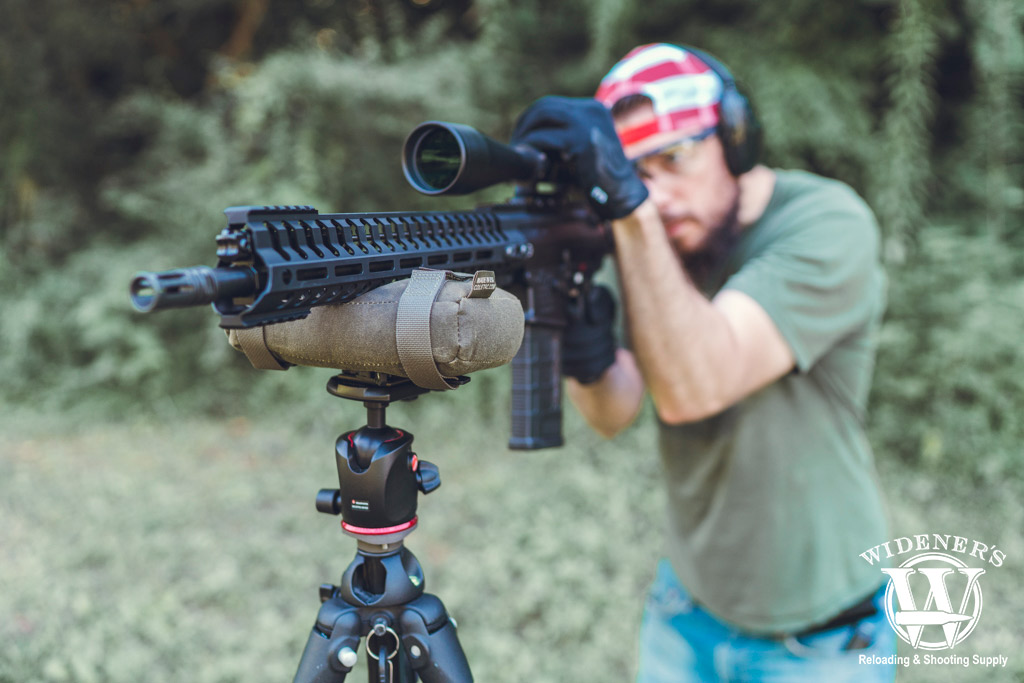
.223 Rem can’t beat 6.5 Creedmoor in power, but it can in pricing, options, and availability.
As far as the 6.5 Creedmoor VS 223 goes, if you’re looking for the most power, then the 6.5 Creedmoor is your best bet. However, if you want a rifle with widely available ammunition, low recoil, and precision accuracy for varmints to small predators, the .223 is probably your caliber.
Overall, the best thing you can do is match the cartridge with your needs. If you’ve been around the gun community, you know there can be some strong opinions. Get this! Get that! Stay away from those! We all have our favorite rounds, but when the sun rises and it’s time to hunt, you must shoot the round that makes you feel confident.
For another comparison article, check out our discussion on the .223 vs. the 308.


